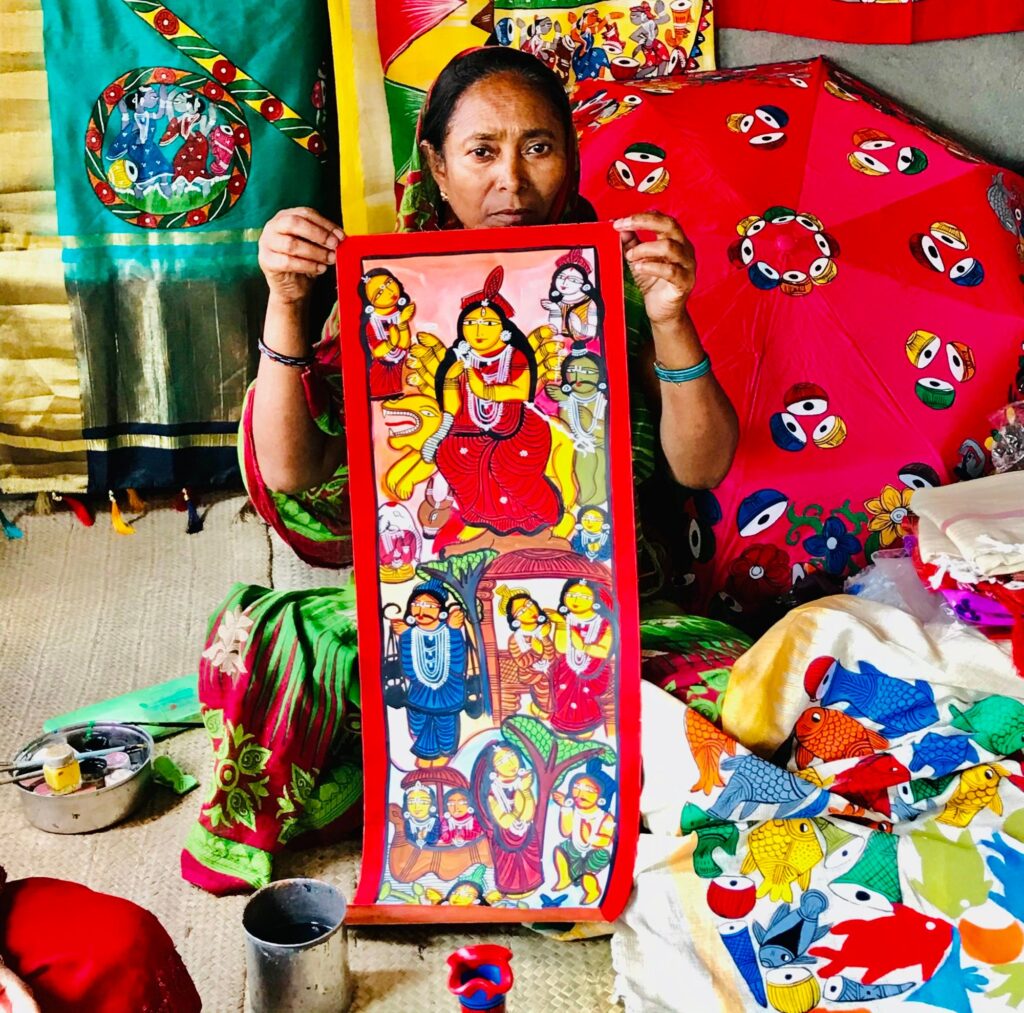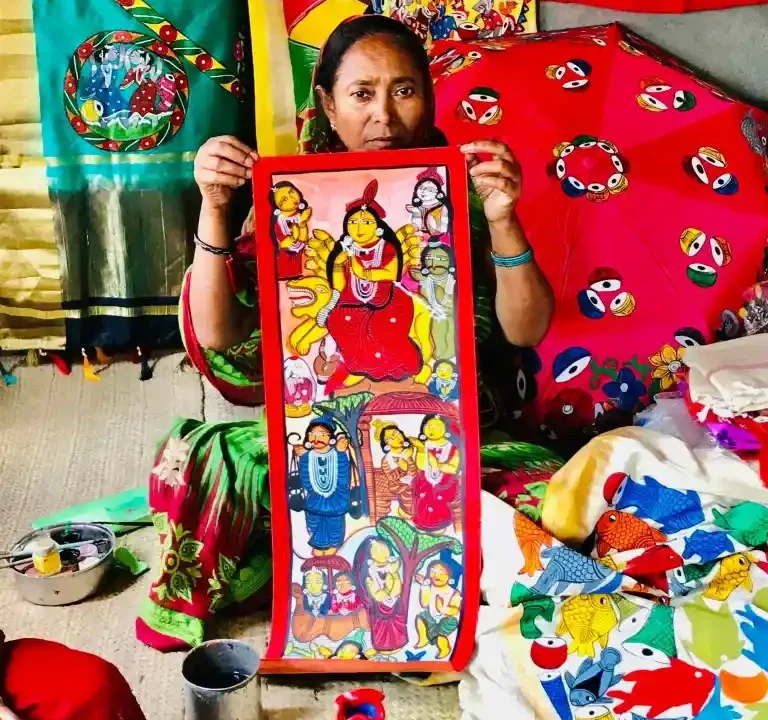In the heartlands of West Bengal, a group of talented folk artists, known as patuas, are weaving ancient traditions into the fabric of modern society, and their impact on the Indian art market is nothing short of remarkable. Amidst dwindling numbers, these artists are on a mission to preserve a centuries-old tradition rooted in the oral histories of Hindu mythologies. But they are doing much more than that – they are using their art to highlight pressing contemporary issues and promote unity between different communities.
Saira Chitrakar, an exemplary artist from West Bengal, recently left a global audience mesmerized with her poignant performance at the International Seminar and Festival of Oral Traditions. Her emotionally charged Bengali song questioned the violence faced by women and was accompanied by a captivating 3-meter-long cloth painting denouncing child marriage. This event marked a significant moment in the patua tradition, as it showcased the power of their unique storytelling art, known as patua sangeet (songs by folk painters), on a global stage.
What sets these patuas apart is their seamless blend of tradition and innovation. Traditionally, they have depicted scenes from Hindu epics and mythologies on cloth scrolls called patachitra while singing self-composed songs that narrate the stories depicted in the paintings, akin to ballad-style performances. Originating from East Bengal, these storytellers have preserved Hindu mythologies through generations of oral tradition dating back to the 11th century.

Surprisingly, evidence of this tradition in scroll form only emerged in the 18th century. Historically, Muslim artists of the patua community were invited by Hindu patrons to present musical renditions of Hindu deity stories, receiving compensation in return. Today, these artists, primarily from West Bengal’s East and West Midnapore regions, have expanded their focus to address contemporary issues such as global warming, plastic pollution, floods, and the Covid-19 pandemic.
Abed Chitrakar, an eighth-generation artist, composed a song celebrating India’s Chandrayaan-II moon mission, demonstrating how these artists are adapting to current events. They understand that their identity survives when their art survives, and this means composing songs on contemporary issues to keep their heritage art alive.
Khukurani Chitrakar, who exhibited her work on road safety in Kyrgyzstan, emphasized the substantial impact of this folk art form in conveying social messages due to its unique blend of oral and visual storytelling. For three decades, governmental bodies and non-profit organizations have engaged patuas to promote various social-welfare initiatives, including women’s literacy, sanitation, and HIV/Aids prevention, through their art and songs.
However, challenges persist. While these projects serve noble purposes, they sometimes limit artistic freedom as artists have to adhere to specific scripts. Additionally, the art’s specific messaging may not always resonate with all art enthusiasts.
Despite these challenges, the patuas have ventured into contemporary sociopolitical themes, using their art to foster communal harmony in a time of increasing attacks on India’s Muslim minority. Abed Chitrakar’s massive 158-meter-long Mahabharata painting with seven other artists exemplifies this commitment to harmony.
The patua art form has evolved over time, with artists transitioning from raw-cotton cloth to paper or canvas, while maintaining the tradition of using organically extracted colors from natural resources. These vibrant paintings have garnered global recognition, displayed in institutions like the Victoria and Albert Museum in London and the Indigo Art Museum in Philadelphia.
However, economic challenges have led some artists to explore alternative livelihoods. To ensure the survival of their art form, some have shifted from performative to visual art, painting mythological figures on garments to attract younger consumers. Abed emphasizes that reimagining the art form is crucial to retaining artists and ensuring the survival of this unique tradition.
In conclusion, the patuas are not only preserving an ancient tradition but also using it to address contemporary issues and promote communal harmony. Their impact on the Indian art market is a testament to the enduring power of art to bridge the gap between tradition and the modern world, conveying important messages to a diverse audience. As Abed Chitrakar rightly puts it, “The art will survive only when the artist survives.”


2 Comments
[…] heritage, resilience, and the revival of a lost art form. Over 50 vibrant paintings inspired by the patachitra, or cloth-based scroll painting, of the Sunderbans adorn the walls, each stroke narrating tales […]
[…] Influence of Folk Art on Contemporary Indian […]